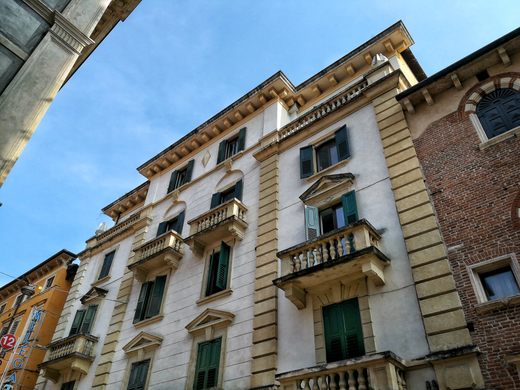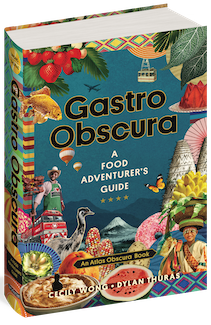Melegatti Bakery Pandoro Sculptures
Atop the former site of a historic bakery sit two stone tributes to Verona's contribution to traditional Italian baking.
Pandoro, which translates to “golden bread” (pan d’oro), is Verona’s answer to Milan’s more famous panettone. Nestled among what is now the fashion shopping district in the alleyways of Verona’s città antica (ancient city center), two sculptures resting on a balcony hint at the site’s significance in the history of this beloved treat.
Golden in color when baked, thanks to being made from dough enriched with sugar, eggs, and butter, the name pandoro also refers to a time when the bread was beyond the reach of anyone but the Veronese nobility. The bread’s distinctive tall, eight-sided shape (frustum-shaped for the geometrists out there) was likely inspired by the older Italian nadalin cake.
Domenico Melegatti founded his eponymous bakery in 1894 and subsequently obtained a patent for the recipe to make pandoro. The building at 21 Corso Porta Borsari once housed the Melegatti Bakery before the company relocated to an industrial facility on the outskirts of Verona in the 1950s. Melegatti’s pandoro remains an Italian favorite, and it’s still sold in a distinctive royal blue, gold-edged box.
Today, the bakery’s former home commemorates Melegatti’s legacy with two stone pandoro-shaped sculptures sitting proudly on both sides of its uppermost balcony. The site is still marked by a sign bearing the bakery’s name; however, the ground floor is now occupied by clothing retailers.
Community Contributors
Added by
Edited by
Plan Your Trip
The Atlas Obscura Podcast is Back!






















Follow us on Twitter to get the latest on the world's hidden wonders.
Like us on Facebook to get the latest on the world's hidden wonders.
Follow us on Twitter Like us on Facebook